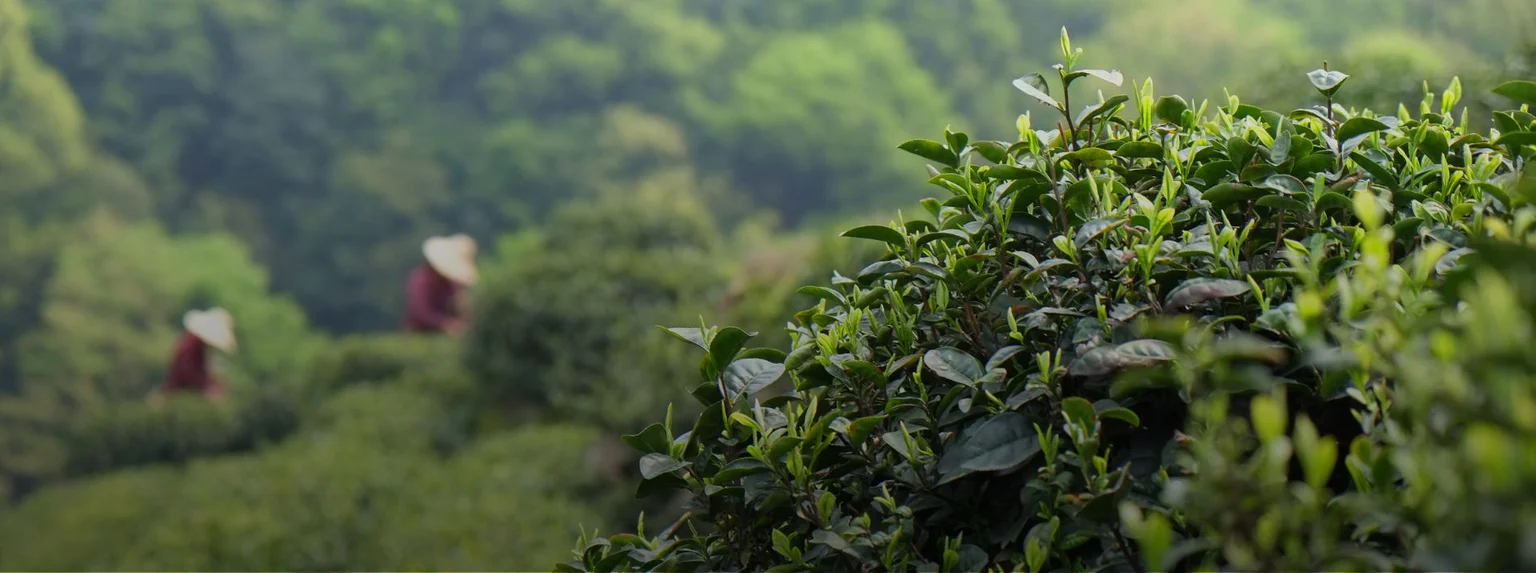
Blog
Learn about white tea
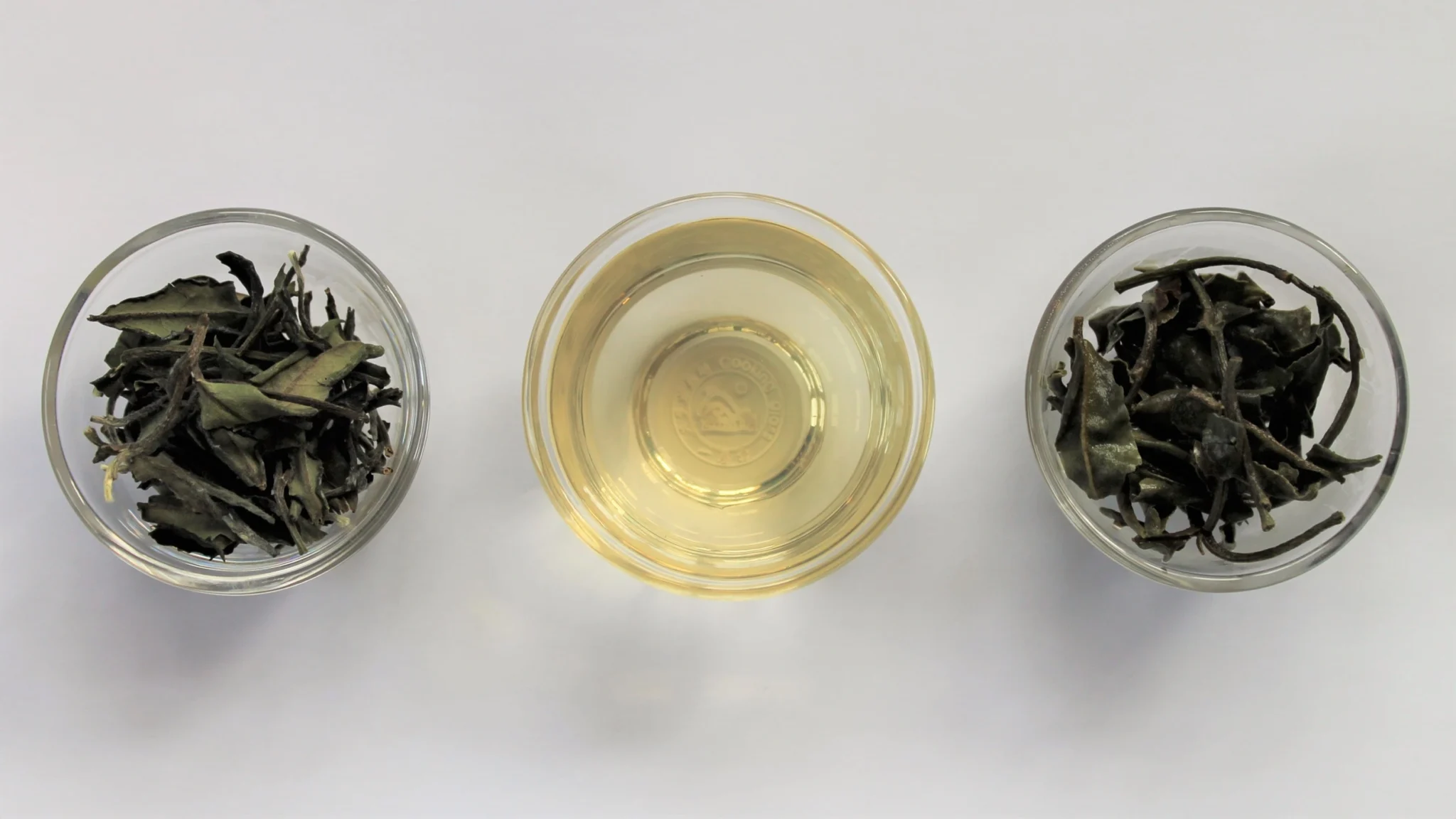
White tea is loved by tea enthusiasts for its delicate sweet aroma and natural grassy scent. In this article, you will learn everything you need to know about white tea, including its types, history, purchasing guide, and storage methods.
What is white tea?
White tea is one of the oldest tea categories in China, originating from Fujian Province. Its production process is much simpler compared to other Chinese teas. It uses manually picked young leaves and buds, which are then dried under sunlight. This simple production process endows white tea with the most delicate and natural fragrance.
White tea gets its name from the white downy hairs covering its surface. The tea soup is light yellow or pale yellow, clear and translucent, emitting a fresh grassy aroma or a faint fruity scent. It is worth noting that white tea can be stored for a long time. Over time, its flavor will gradually change, developing a warm jujube aroma or medicinal fragrance, similar to aged wine. This characteristic makes it very popular in the market.
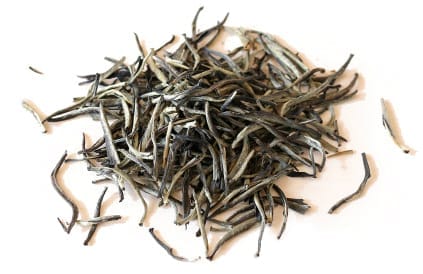
What is white tea
Types of White Tea
White tea is classified according to picking standards and raw material grades. Different varieties have distinct flavor profiles, catering to diverse taste preferences. Understanding these categories can help you quickly find the white tea that suits you best.
Bai Hao Yin Zhen: Made exclusively from the tender buds of tea plants, harvested in early spring (late March to early April), when the buds are rich in nutrients and plump. The white downy hairs on its surface are its hallmark, imparting a crisp and refreshing taste. Bai Hao Yin Zhen from Fuding, Fujian, has more white downy hairs and a light yellow, clear broth; those from Zhenghe have slightly thinner buds and a mildly sweet flavor.
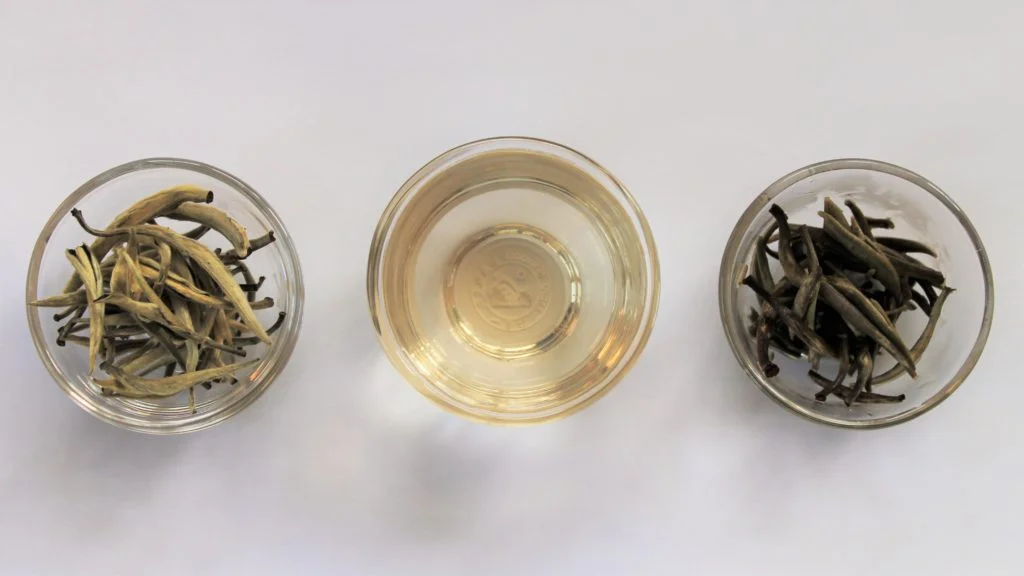
Bai Hao Yin Zhen
Bai Mu Dan: Made from one bud and one or two leaves, the bud and leaves are connected like small flower buds. It combines the freshness of the bud with the richness of the leaves, featuring a fresh aroma with hints of grassy and fruity notes. Bai Mu Dan made with new processing techniques has a stronger flavor, a darker tea color, and a lingering aftertaste, making it suitable for those new to white tea.

Bai Mu Dan
Shoumei: Made from mature leaves and tea stems, it appears ordinary but is highly durable. The tea stems make the tea broth more mellow, and after storage, it develops a date-like or medicinal aroma. Shoumei from Songxi, Fujian, is particularly favored by seasoned tea enthusiasts due to its richer flavor after storage, attributed to the mineral-rich soil of the region.
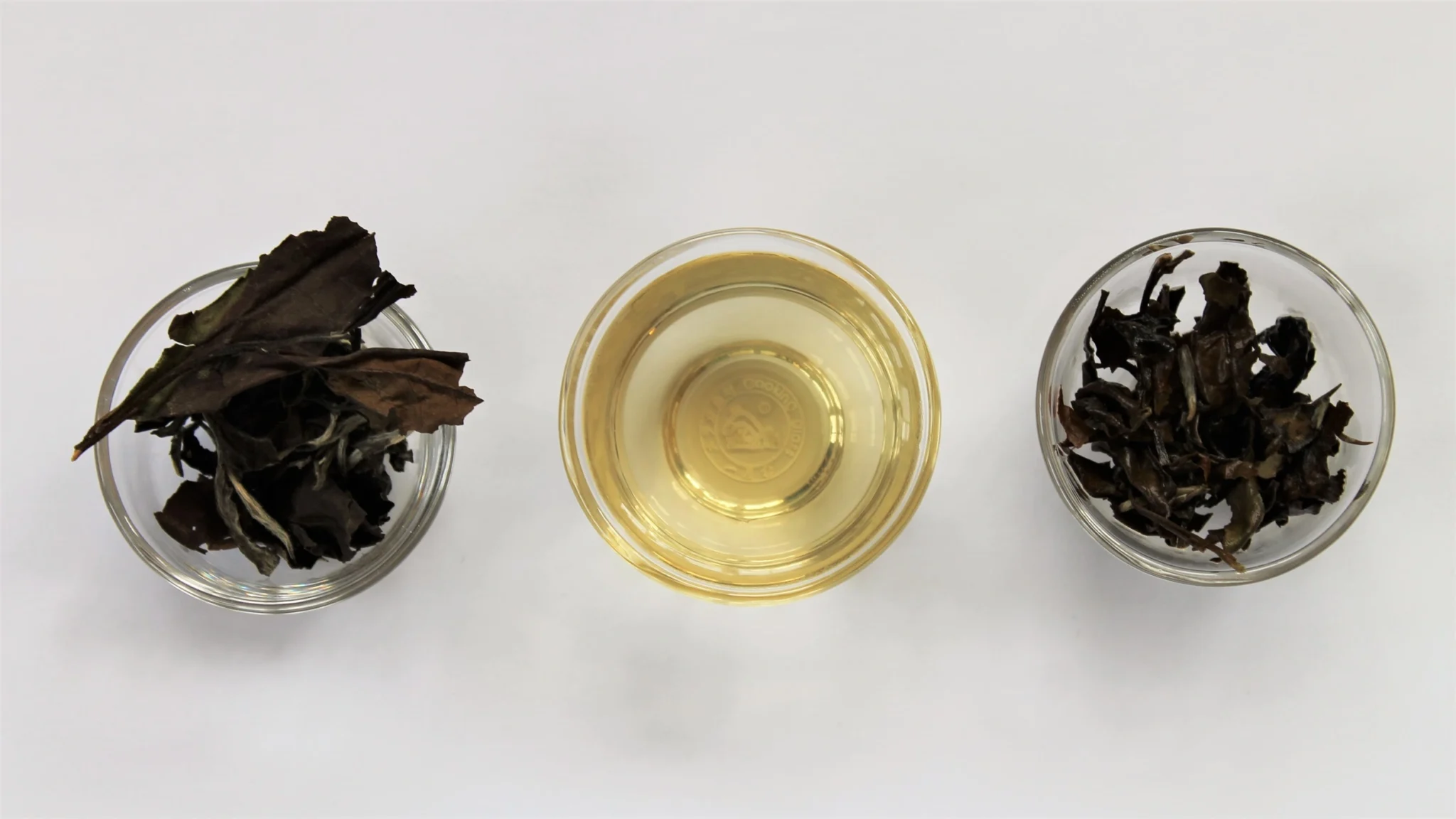
Shoumei
Understanding the History of White Tea
The Emergence of White Tea in the Tang Dynasty (618-907): The earliest origins of white tea can be traced back to China’s Tang Dynasty. At that time, tea farmers in Fujian discovered that fresh tea leaves, when dried in the sun, had a sweet taste. This was the earliest prototype of white tea, though a systematic production process had not yet been developed.
Becoming a Royal Tribute in the Song Dynasty (960-1279): White tea was valued by the royal court for its rarity and unique flavor. Explicit records of the name “white tea” began to appear in documents. It was mainly produced in the Jian’an area (present-day Jian’ou) of Fujian, exclusively for the imperial court’s consumption.
Standardization of the Production Process in the Ming Dynasty (1368-1644): Tea-making techniques improved, leading to the formation of the minimalist process of “withering + drying”, which is similar to the modern method of making white tea.
Spread in Modern and Contemporary Times: Since the 20th century, white tea has spread from China to the rest of the world. It has gained wider recognition for its natural and healthy properties, and today it has become a favorite among tea lovers globally. The traditional craftsmanship has also been preserved and passed down.
Guide to Purchasing White Tea
To buy high-quality white tea, mastering a few key points can help you avoid detours. Good white tea not only has a better taste but also better reflects its unique value. Here are practical methods for selection:
Check the appearance of dry tea: High-quality white tea has a natural color in its dry form. Baihao Yinzhen (White Hair Silver Needle) should be silvery white or grayish white, covered with fine white down; Baimudan (White Peony) has buds and leaves attached to the branches, with a color that is grayish green mixed with silvery white; Shoumei has stretched leaves, showing dark green or brownish green. Avoid tea with black spots, mold, or a lot of crumbs, as these are usually signs of poor quality.
Smell the aroma: Fresh white tea should have a natural fresh fragrance, which may carry the scent of plants, a light floral or fruity aroma, or a honey-like fragrance; aged white tea that has been stored for many years has a warm aged aroma (such as jujube fragrance or medicinal fragrance). If you smell a musty, burnt, or pungent odor, it indicates improper storage or problems in production, and it is not recommended to buy.
Brew and observe: After brewing, the tea soup should be clear and transparent. New tea is mostly light yellow or apricot yellow, while aged tea tends to be amber. The taste in the mouth is sweet and mild, without obvious bitterness or astringency, and there is a natural sweet aftertaste after swallowing. If the tea soup is turbid, the taste is bland, or there are unusual flavors, the quality may be poor.
Pay attention to origin and craftsmanship: White tea from core producing areas such as Fuding and Zhenghe in Fujian is more guaranteed in quality. Tea made by the traditional “natural withering + low-temperature drying” process retains the original flavor better than that dried at high temperatures. You can check the origin information and craftsmanship description when purchasing.
Distinguish between new tea and aged tea: New tea is fresh and refreshing, suitable for immediate drinking; aged tea (stored for more than 3 years) has a mellow taste, suitable for those who like a warm and gentle taste. Choose according to your own needs, and at the same time, note that aged tea should have clear storage records to avoid buying inferior tea that has been artificially aged.
The Production Process of White Tea
Although the production process of white tea is simple, it is precisely because of minimal intervention that the tea’s natural flavor is preserved. The following are the key steps in the production of white tea.
Picking: Select fresh, tender buds and leaves. Picking standards vary depending on the variety. Bai Hao Yin Zhen is made from single buds, Bai Mu Dan from one bud and one leaf or two leaves, and Shou Mei from mature leaves and tea stems. Picking typically takes place from around the Qingming Festival to the Grain Rain Festival, when the tea leaves are rich in nutrients.
Wilting: This is the core step in white tea production. Fresh leaves are evenly spread out on bamboo trays or mats and placed in a well-ventilated area to dry naturally, or lightly sun-dried under weak sunlight (avoiding direct exposure). During this process, the leaves gradually lose moisture, enzyme activity is gradually activated, and mild fermentation begins. The leaves turn from bright green to dark green and emit a natural, refreshing aroma. This step requires precise control of time and environmental humidity, typically lasting 1–3 days.
Drying: After withering, the tea is dried to remove remaining moisture (moisture content must be reduced to below 5%). Traditional methods involve sun-drying, which slowly dries the tea using sunlight to preserve more aroma; modern methods often use low-temperature drying (temperature not exceeding 60°C) to avoid high temperatures that could damage the tea’s nutrients and flavor. After drying, the tea leaves retain their shape and aroma, making them suitable for storage.
Characteristics: The entire process involves no killing of green, no rolling, and relies entirely on natural forces for transformation. This process allows white tea to retain abundant amino acids and tea polyphenols, forming its unique sweet and mellow taste, which perfectly interprets the “natural perfection” tea-making philosophy.
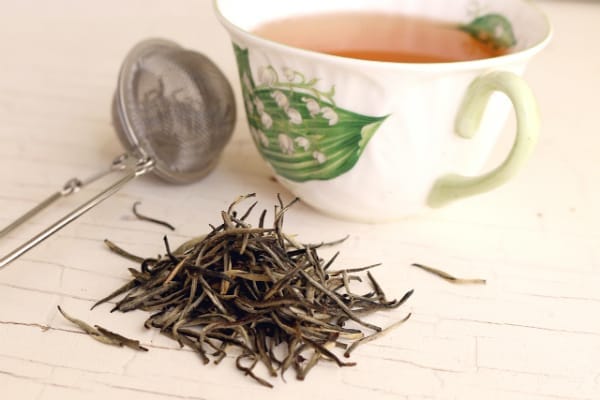
white tea
The Proper Storage Methods for White Tea
The key to storing white tea is to preserve its flavor. High-quality white tea becomes more aromatic the longer it is stored. Proper storage allows the tea’s aroma to develop more fully over time. Below are the key points for properly storing white tea.
Container Selection: Prioritize ceramic jars, tin cans, or airtight aluminum foil bags (air must be removed). Avoid plastic containers (which can retain odors) or glass jars (which are light-permeable). For long-term storage, wrap the tea leaves in xuan paper or cotton paper before placing them in a ceramic jar, which allows for ventilation while preventing moisture absorption.
Environmental Control: Store in a well-ventilated, dry location with humidity maintained between 50% and 60% (excessive humidity can cause mold growth) and temperature stabilized around 20°C (avoid direct sunlight and areas near heating or air conditioning units). In humid regions, place a small amount of desiccant (such as silica gel packets) in the storage area, but keep it separate from the tea.
Avoid odors: White tea has strong absorptive properties, so it should be stored separately from kitchens, perfumes, cigarettes, and other odor-producing areas. If stored with other tea varieties, ensure the containers are tightly sealed to prevent odor transfer.
Long-term storage precautions: Old white tea should be inspected regularly (every 3-6 months) to check for mold spots or odors. If the tea becomes soft or develops a musty smell, it should be promptly air-dried (avoid direct sunlight) or the storage environment should be changed. White tea intended for short-term consumption can be sealed and stored in the refrigerator (but must be kept in a separate compartment to prevent odor transfer). Remove it from the refrigerator and allow it to warm to room temperature before opening.
Frequently Asked Questions About White Tea
Q: What are the health benefits of white tea?
A: White tea retains more natural components and is rich in antioxidants, which help fight aging and protect the cardiovascular system. It also has antibacterial properties and regulates metabolism. It is mild and non-irritating, making it suitable for most people to drink daily.
Q: What is the difference between white tea and green tea?
A: White tea is not pan-fried or rolled, undergoes minimal fermentation, and has a sweet and refreshing taste. Green tea is pan-fried and rolled, undergoes no fermentation, and has a fresh and slightly astringent taste. White tea can be stored for a long time, while green tea should be consumed promptly.
Q: How long can white tea be stored? Does it expire?
A: White tea can be stored for a long time and has no fixed shelf life; it becomes more aromatic with age. New tea is best enjoyed fresh, while tea aged for over three years becomes “old tea,” developing a smoother flavor. However, it must be stored in a dry environment; if it molds, it should not be consumed.
Q: Does white tea have high caffeine content? Is it suitable for drinking before bed?
A: New tea has slightly higher caffeine content, while old tea has lower levels. Before bed, opt for old Shoumei tea; moderate consumption does not affect sleep, but those with sensitivity should avoid new tea.
